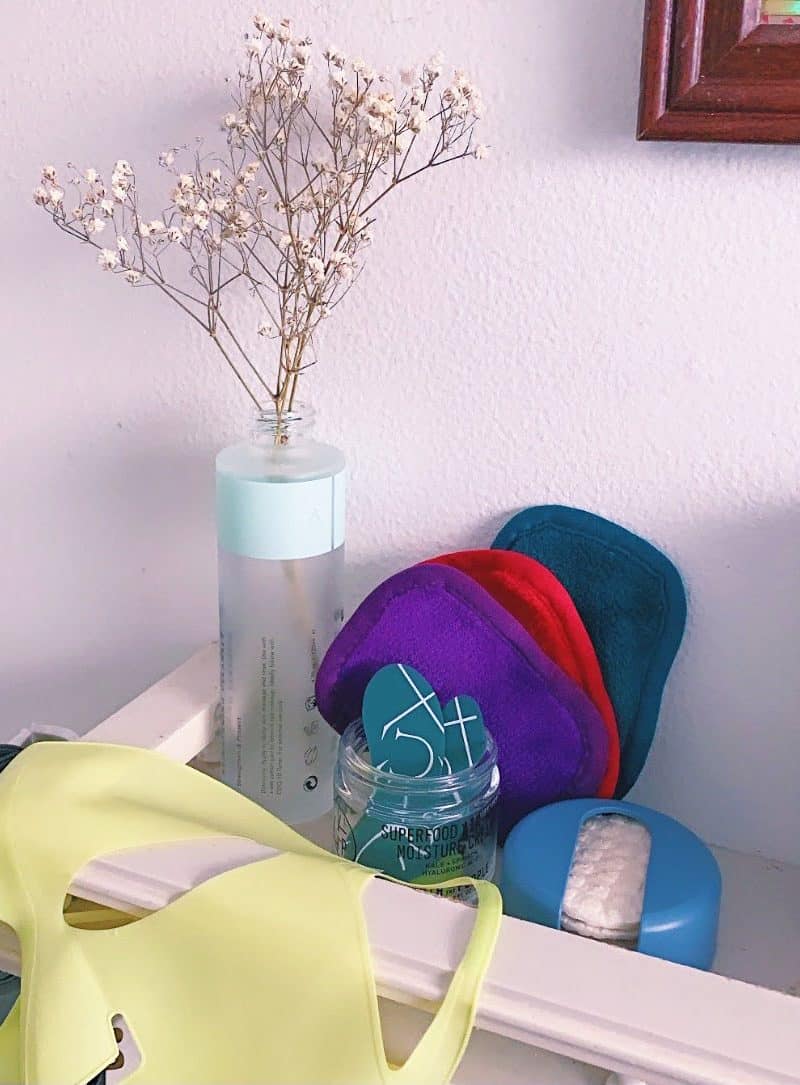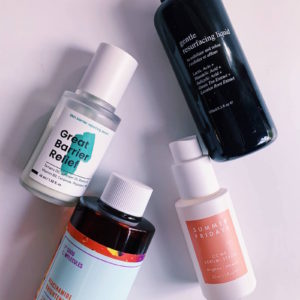Ever feel your skin get warm, red, or inflamed? There’s a chance you could have rosacea. But don’t worry – you’re not alone.
An estimated 16 million Americans have rosacea, yet only a small fraction are being treated.
rosacea.org
For today’s post, I wanted to break down some of the main causes of rosacea, how to treat it, and some product recommendations. I do want to preface this by saying that I recommend checking in with a dermatologist for all skin conditions, as they will have a more clinical understanding of the skin. This is meant to be a resource that can help educate you on the basics of rosacea and some over-the-counter products that can help calm inflammation..
I also want to note that since rosacea is a medical condition, it can not truly be “cured”, but understanding your personal triggers and getting the right treatments can help manage the condition.
What is it?
First, let’s start by talking about what rosacea is. Rosacea is an inflammatory skin condition that can cause redness and breakouts. Rosacea’s most common symptoms are frequent redness and flushing around the nose and cheeks, but it can worsen and spread to other areas of the face and body. If left untreated, the condition and symptoms can worsen over time.
Some more severe symptoms include inflammatory bumps and pimples, eye irritation (swollen and/or red), visible blood vessels (telangiectasia), and even skin thickening in severe cases. I know, it sounds crazy – but there are treatments that can help manage the condition!
What Causes Rosacea?

It’s hard to really pinpoint what causes this condition, but scientists have seen a pattern with genetics, your immune system, and bugs or demodex mites. Although there is no specific cause, determining your individual triggers can help manage the condition.
There are a variety of different triggers for rosacea, and they differ from person to person. It can be anything from genetics to increased stress or sun exposure. Let’s break down some of the most common triggers:
High-Inflammatory foods: Since rosacea is an inflammatory condition, increases in inflammation in the body can trigger it. Consuming large amounts of high-inflammatory foods like dairy, alcohol, and spicy foods could be a trigger for your rosacea.
Demodex Mites: I know, the idea of having mites on your skin sounds really gross, but everyone has them on their skin! People with rosacea tend to have larger amounts of these mites on their skin. Because of this, it’s important to incorporate gentle chemical exfoliation to help manage them.
Hormone Imbalance: Changes in hormones and stress take a toll on your body, and this can also trigger rosacea and inflammation. Just like how acne can worsen when your hormones are imbalanced, a similar flare-up can happen with rosacea.
Changes in Heat/Temperature: Rosacea tends to flare with “extreme” temperature changes. Some examples of this could be doing hot yoga, a long day out in the sun, or blasting the heater in your house. Any environmental changes that increase inflammation in the body could be a potential trigger for rosacea.
It can be challenging to identify your personal rosacea triggers, so I recommend keeping a journal and take notes when you get a flare-up. Here’s an amazing template from Rosacea.org you could use!
How to Treat it

Like most medical conditions, rosacea can be very difficult to treat with over-the-counter products. However, incorporating skin-soothing products and keeping your routine simple can help calm inflammation. While these can help, if you are dealing with a more severe case of rosacea, I definitely recommend checking with a dermatologist for targeted treatment. If you’re looking for some over-the-counter products to help soothe your skin, here are some tips:
1. Stick to the basics
When you have a rosacea flare-up, it’s important to simplify your routine. Avoid active ingredients like exfoliating acids, retinoids, and vitamin c until your skin calms down. Focus on using a gentle cleanser, simple moisturizer, and SPF 30+. Keeping things simple will avoid exasperating the issue, and you can add new products in when your skin calms down. Some great picks are the Krave Matcha Hemp Hydrating Cleanser, I’m From Mugwort Cream*, and the Drmtlgy SPF 45*.
2. Incorporate barrier-strengthening ingredients
To help prevent flare-ups, maintaining a strong skin barrier is key. Having a compromised skin barrier can lead to more irritation and inflammation over time. Look for ingredients like ceramides, cholesterol, and niacinamide that help strengthen the skin barrier. My holy grail barrier-strengthening product is Stratia Liquid Gold – it’s a great pick for sensitive/rosacea-prone skin!
3. Continue gentle exfoliation
While adding skin-soothing products can help calm inflammation, it’s important to focus on exfoliation to keep the demodex mites under control. Using a gentle exfoliating treatment 2-3 times a week can help minimize the amount of demodex mites on the skin. Look for gentle exfoliators with ingredients like mandelic acid, azelaic acid, and lactic acid. These tend to be gentler on the skin than other actives like retinoids. Josh Rosebrook Daily Acid Toner has a mix of acids that is gentle enough for rosacea-prone skin.
In conclusion, rosacea is a very common skin condition that millions of people have. Identifying your personal triggers and focusing on a simple, soothing routine can help manage the condition. I hope this can be a resource to help you learn more about rosacea and what products and ingredients can help soothe the skin. If you have acne-prone skin and want to learn more about some of the main causes of acne, check out my blog post here. Have any additional questions? Feel free to contact me here or on my Instagram 🙂
*Indicate affiliate links. If you choose to purchase any products through my link, I make a small commission that helps support this blog and my IG. Feel free to check out all of my affiliate/referral links if you decide to shop. Thank you for your support!


